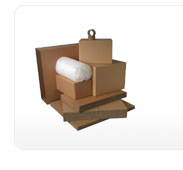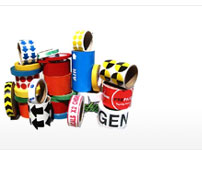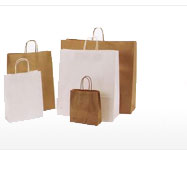| About Us |
 |
 |
 |
 |
 |
 |
Home » Packaging EXIM Guide
Packaging EXIM Guide
Exim Guide help to describes the guidance for Export and Import Trade for the existing and new businessman.
These are the points for the details -
Chapter 1 - Payment Methods In Export Import
Chapter 2 - Payment Collection Against Bills
Chapter 3 - Letter Of Credit (L/c)
Chapter 4 - Trade Documents
Chapter 5 - Pre Shipment Trade Finance
Chapter 6 - Registration of Exporters
Chapter 7 - Export License
Chapter 8 - Registration of Importers
Chapter 9 - Finalizing The Terms of Import
Chapter 10 - Import Duties
Chapter 11 - Import Risks
Chapter 12 - Import Incentives under Special Schemes
Chapter 13 - Methods of Payment in Import Trade
Chapter 14 - Export Risks Management
Chapter 15 - Packaging And Labeling Of Goods
Chapter 16 - Inspection Certificates And Quality Control
Chapter 17 - Export Documents
Chapter 18 - Market Selection
Chapter 19 - Foreign Exchange Management Act (FEMA)
Chapter 20 - Currency Risk
Chapter 21 - Contract Credit Risk
Chapter 22 - Country Political Risk
Chapter 23 - Guidelines And Rules for Import
Chapter 24 - Preliminaries for Starting Import Business
Chapter 25 - SWOT Analysis
HIGHLIGHTS OF EXIM POLICY
HIGHLIGHTS OF EXIM POLICY, 2002-07 of India
Ministry of Commerce & Industry, Government of India
Ministry of Commerce & Industry, Government of India
I- Special Economic Zones (SEZs)
Offshore Banking Units (OBUs) shall be permitted in SEZs. Detailed guidelines are being worked out by RBI. This should help some of our cities emerge as financial nerve centres of Asia.
Units in SEZ would be permitted to undertake hedging of commodity price risks, provided such transactions are undertaken by the units on stand-alone basis. This will impart security to the returns of the unit.
It has also been decided to permit External Commercial Borrowings (ECBs) for a tenure of less than three years in SEZs. The detailed guidelines will be worked out by RBI. This will provide opportunities for accessing working capital loan for these units at internationally competitive rates.
II- Employment oriented
Agriculture
Export restrictions like registration and packaging requirement are being removed today on Butter, Wheat and Wheat products, Coarse Grains, Groundnut Oil and Cashew to Russia . Quantitative and packaging restrictions on wheat and its products, Butter, Pulses, grain and flour of Barley, Maize, Bajra, Ragi and Jowar have already been removed on 5thMarch, 2002.
Restrictions on export of all cultivated (other than wild) varieties of seed, except Jute and Onion, removed.
To promote export of agro and agro based products, 20 Agri export zones have been notified. In order to promote diversification of agriculture, transport subsidy shall be available for export of fruits, vegetables, floriculture, poultry and dairy products. The details shall be worked out in three months.
3% special DEPB rate for primary & processed foods exported in retail packaging of 1 kg or less.
b) Cottage Sector and Handicrafts
i) An amount of Rs. 5 crore under Market Access Initiative (MAI) has been earmarked for promoting cottage sector exports coming under the KVIC.
ii) The units in the handicrafts sector can also access funds from MAI scheme for development of website for virtual exhibition of their product.
iii) Under the Export Promotion Capital Goods (EPCG) scheme, these units will not be required to maintain average level of exports, while calculating the Export Obligation.
iv) These units shall be entitled to the benefit of Export House status on achieving lower average export performance of Rs.5 crore as against Rs. 15 crore for others; and
v) The units in handicraft sector shall be entitled to duty free imports of an enlarged list of items as embellishments upto 3% of FOB value of their exports.
c) Small Scale Industry
With a view to encouraging further development of centres of economic and export excellence such as Tirupur for hosiery, woollen blanket in Panipat, woollen knitwear in Ludhiana, following benefits shall be available to small scale sector:
i. Common service providers in these areas shall be entitled for facility of EPCG scheme.
ii. The recognised associations of units in these areas will be able to access the funds under the Market Access Initiative scheme for creating focused technological services and marketing abroad.
iii. Such areas will receive priority for assistance for identified critical infrastructure gaps from the scheme on Central Assistance to States
iv. Entitlement for Export House status at Rs. 5 crore instead of Rs. 15 crore for others.
d) Leather
Duty free imports of trimmings and embellishments upto 3% of the FOB value hitherto confined to leather garments extended to all leather products.
e) Textiles
i. Sample fabrics permitted duty free within the 3% limit for trimmings and embellishments.
ii. 10% variation in GSM be allowed for fabrics under Advance Licence.
iii. Additional items such as zip fasteners, inlay cards, eyelets, rivets, eyes, toggles, velcro tape, cord and cord stopper included in input output norms.
iv. Duty Entitlement Passbook (DEPB) rates for all kinds of blended fabrics permitted. Such blended fabrics to have the lowest rate as applicable to different constituent fabrics.
f) Gem & Jewellery
i. Customs duty on import of rough diamonds is being reduced to 0%. Import of rough diamonds is already freely allowed. Licensing regime for rough diamond is being abolished. This should help the country emerge as a major international centre for diamonds.
ii. Value addition norms for export of plain jewellery reduced from 10% to 7%. Export of all mechanised unstudded jewellery allowed at a value addition of 3 % only. Having already achieved leadership position in diamonds, now efforts will be made for
achieving quantum jump on jewellery exports as well.
iii. Personal carriage of jewellery allowed through Hyderabad and Jaipur airport as well.
(III) Technology oriented
a) Electronic hardware
The Electronic Hardware Technology Park (EHTP) scheme is being modified to enable the sector to face the zero duty regime under ITA(Information Technology Agreement)-1. The units shall be entitled to following facility:
Net Foreign Exchange as a Percentage of Exports (NFEP) positive in 5 years.
No other export obligation for units in EHTP.
Supplies of ITA I items having zero duty in the domestic market to be eligible for counting of export obligation.
b) Chemicals and Pharmaceuticals
All pesticides formulations to have 65% of DEPB rate of such pesticides.
Free export of samples without any limit.
Reimbursement of 50% of registration fees for registration of drugs.
c) Projects
Free import of equipment and other goods used abroad for more than one year.
(IV) Growth Oriented
a) Strategic Package for Status Holders
The status holders shall be eligible for the following new/ special facilities:
i. Licence/Certificate/Permissions and Customs clearances for both imports and exports on self-declaration basis.
ii. Fixation of Input-Output norms on priority;
iii. Priority Finance for medium and long term capital requirement as per conditions notified by RBI;
iv. Exemption from compulsory negotiation of documents through banks. The
remittance, however, would continue to be received through banking channels;
v. 100% retention of foreign exchange in Exchange Earners’ Foreign Currency (EEFC) account;
vi. Enhancement in normal repatriation period from 180 days to 360 days.
b) Neutralising high fuel costs
I. Fuel costs to be rebated by it in Standard Input Output Norms (SIONs) for all export products. This would enhance the cost competitiveness of our export products. The value of fuel to be permitted as a percentage of FOB value of exports for various product groups is as under:
| Product Group | Value of fuel as a percentage of FOB value of exports |
| Bulk Drug and Drug Intermediates | 5% |
| Dye and Dye Intermediates | 4% |
| Glass | 5% |
| Ceramic Products | 5% |
| Paper made from wood pulp/ waste pape | 5% |
Pesticides (Technical)/ Pesticidesformulation from Basic Stage |
5% |
| Refractory items | 7% |
Ferrous engineering products manufactured though forging/ casting process |
7% |
Non ferrous basic meta |
4% |
| Plastic and plastic products from basic/ monomer stage | 5% |
| Fibre to yar | 4% |
| Yarn to fabric/ madeups/ garments | 3% |
| Fibre to fabric/ madeups/ garments | 7% |
c) Diversification of markets
Setting up of "Business Centre" in Indian missions abroad for visiting Indian exporters/businessmen.
ITPO portal to host a permanent virtual exhibition of Indian export product.
iii) Focus LAC (Latin American Countries) was launched in November, 1997 in order to accelerate our trade with Latin American countries. This has been a great success. To consolidate the gains of this programme, we are extending this upto March, 2003.
Focus Africa is being launched today. There is tremendous potential for trade with the Sub Saharan African region. During 2000-01, India’s total trade with Sub Saharan African region was US$ 3.3 billion. Out of this, our exports accounted for US$ 1.8 billion and our imports were US$ 1.5 billion. The first phase of the Focus Africa programme shall include 7 countries namely,
Nigeria, South Africa, Mauritius , Kenya, Ethiopia, Tanzania and Ghana. The exporters exporting to these markets shall be given Export House Status on export of Rs.5 crore. v) Links with CIS countries to be revived. We have traditional trade ties with these countries . In the year 2000-01, our exports to these countries were to the extent of US$ 1082 million. In this group, Kazakhstan, Kyrgyzstan, Uzbekistan, Turkmenistan, Ukraine and Azerbaijan to be in special focus in the first phase.
d) North Eastern States, Sikkim and Jammu & Kashmir
Transport subsidy for exports to be given to units located in North East, Sikkim and Jammu & Kashmir so as to offset the disadvantage of being far from ports.
e) Re-location of industries
To encourage re-location of industries to India, plant and machineries would be permitted to be imported without a licence, where the depreciated value of such relocating plants exceeds Rs. 50 crores.
(V) Reduction in transaction time & cost
With a view to reducing transaction cost, various procedural simplifications have been introduced. These include:
DGFT
i. A new 8 digit commodity classification for imports is being adopted from today. This classification shall also be adopted by Customs and DGCI&S shortly. The common classification to be used by DGFT and Customs will eliminate the classification disputes and hence reduce transaction costs and time. Similarly, Ministry of Environment and Forests is in the process of finalisation of guidelines to regulate the import of hazardous waste.
ii. Further simplification of all schemes.
iii. Reduction of the maximum fee limit for electronic application under various schemes from Rs. 1.5 lakh to Rs. 1.00 lakh.
iv. Same day licensing introduced in all regional offices.
Customs
Adoption and harmonisation of the 8 digit ITC(HS) code.
The percentage of physical examination of export cargo has already been reduced to less than 10 percent except for few sensitive destinations.
The application for fixation of brand rate of drawback shall be finalised within 15 days.
Banks
Direct negotiation of export documents to be permitted. This will help the exporters to save bank charges.
100% retention in EEFC accounts.
The repatriation period for realisation of export proceeds extended from 180 days to 360 days. The facility is already available to units in SEZ and exporters exporting to Latin American countries.
These facilities are being made available to status holders only for the present.
(VI) Trust Based
Import/Export of samples to be liberalised for encouraging product upgradation.
Penal interest rate for bonafide defaults to be brought down from 24% to 15%.
No penalty for non-realisation of export proceeds in respect of cases covered by ECGC insurance package.
No seizure of stock in trade so as to disrupt the manufacturing process affecting delivery schedule of exporters.
i. Foreign Inward Remittance Certificate (FIRC) to be accepted in lieu of Bank Realisation Certificate for documents negotiated directly.
ii. Optional facility to convert from one scheme to another scheme. In case the exporter is denied the benefit under one scheme, he shall be entitled to claim benefit under some other scheme.
iii. Newcomers to be entitled for licences without any verification against execution of Bank Guarantee.
(VII) Duty neutralisation instruments
a) Advance Licence
Duty Exemption Entitlement Certificate (DEEC) book to be abolished. Redemption on the basis of Shipping bills and Bank Realisation Certificates.
Withdrawal of Advance Licence for Annual Requirement (AAL) scheme as problems were encountered in closure of AAL and the significance of scheme considerably reduced due to dispensation of DEEC. The exporters can avail Advance Licence for any value.
Mandatory spares to be allowed in the Advance Licence upto 10% of the CIF value.
b) Duty Free Replenishment Certificate (DFRC)
Technical characteristics to be dispensed with for audit purpose.
c) Duty Entitlement Passbook (DEPB)
Value cap exemption granted on 429 items to continue.
No Present Market Value (PMV) verification except on specific intelligence.
Same DEPB rate for exports whether as CBUs or in CKD/SKD form, Reduction in rates only after due notice. DEPB for transport vehicles to Nepal in free foreign exchange.
DEPB rates for composite items to have lowest rate applicable for such constituent.
d) Export Promotion Capital Goods (EPCG)
EPCG licences of Rs.100 crore or more to have 12 year export obligation (EO) period with 5 year moratorium period.
EO fulfilment period extended from 8 years to 12 years in respect of units in agri-export
zones and in respect of companies under the revival plan of BIFR.
Supplies under Deemed Exports to be eligible for export obligation fulfilment along with deemed export benefit.
Re-fixation of EO in respect of past cases of imports of second hand capital goods under
EPCG Scheme.
|
|
Packaging Products
• Adhesive, Glue & Gelatin
• Collapsible & Laminated Tubes • Colored Aluminium Tins • Flexible Packaging Material • Glass Security Laminates • HDPE Sacks & Woven Sacks Packaging Suppliers
• Packaging Pallets & Boxes
• Packaging Films & Rolls • Packaging Pouches • Packaging Labels & Stickers • Packaging Bags • Packaging Sacks Packaging Suppliers
• Packaging Inks
• Tea Packaging Films • Waterblocking Tape • Waterproof Tape • Window Film • Packing Material Manufacturing |
|
Site Designed & Promoted by Advent Infosoft Pvt. Ltd. |